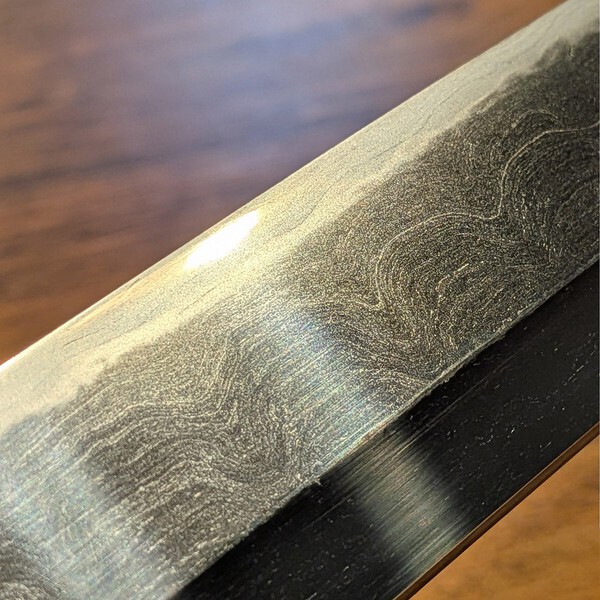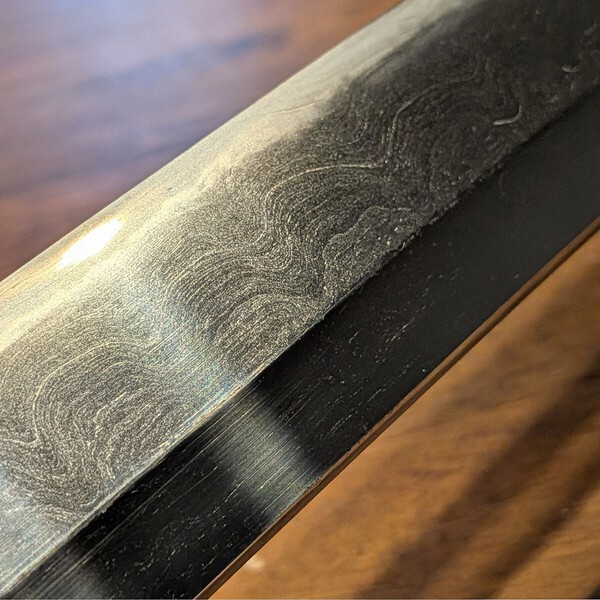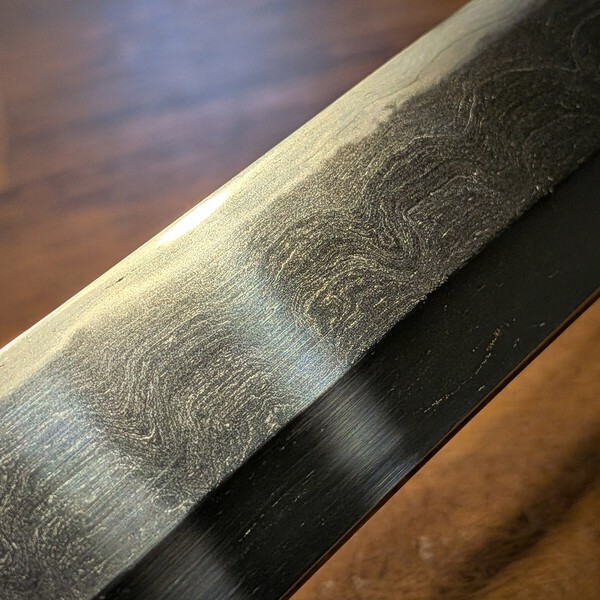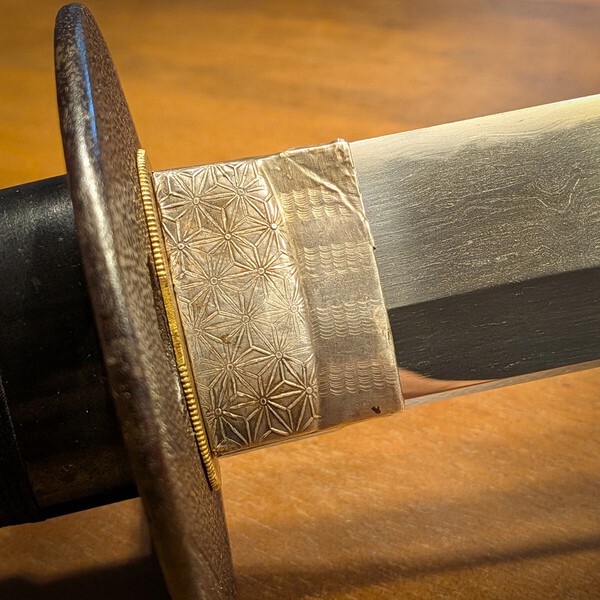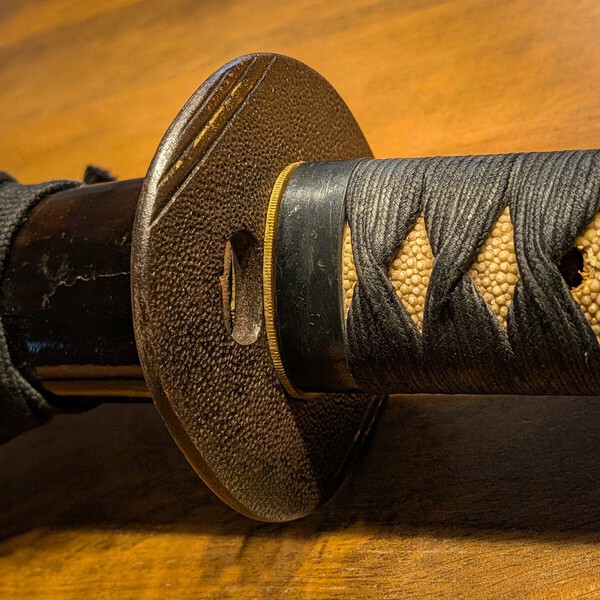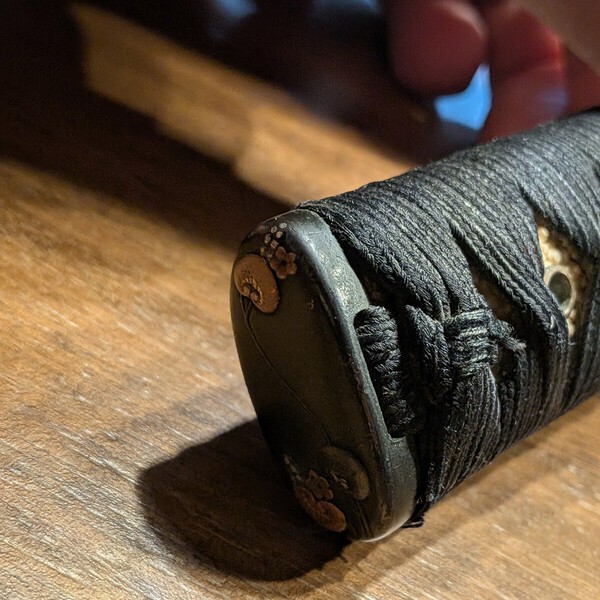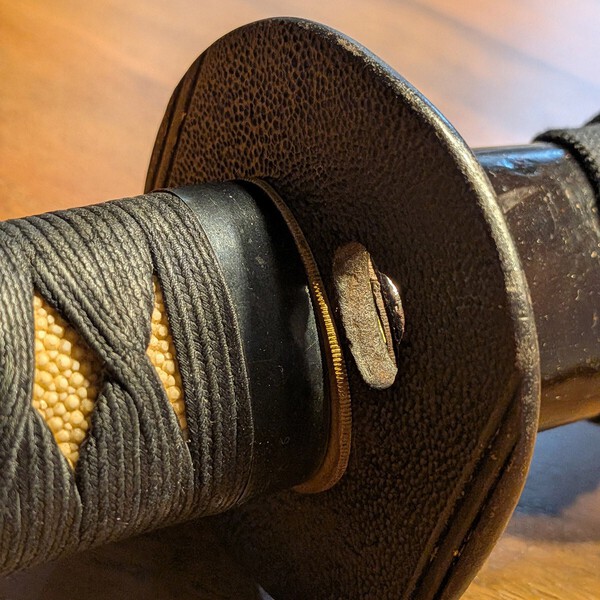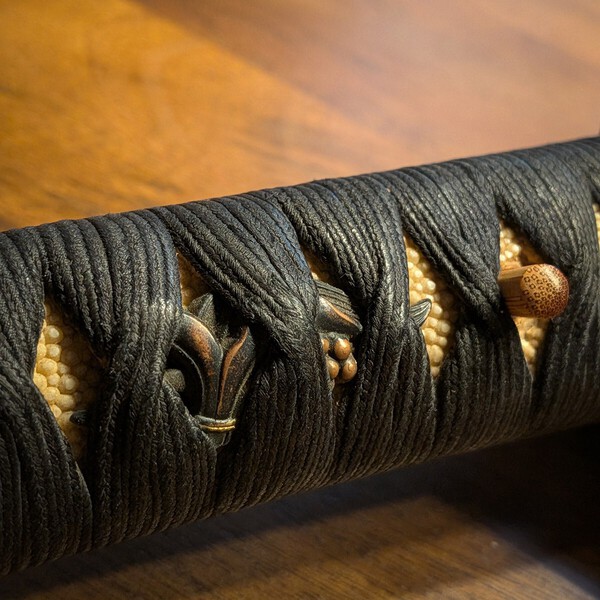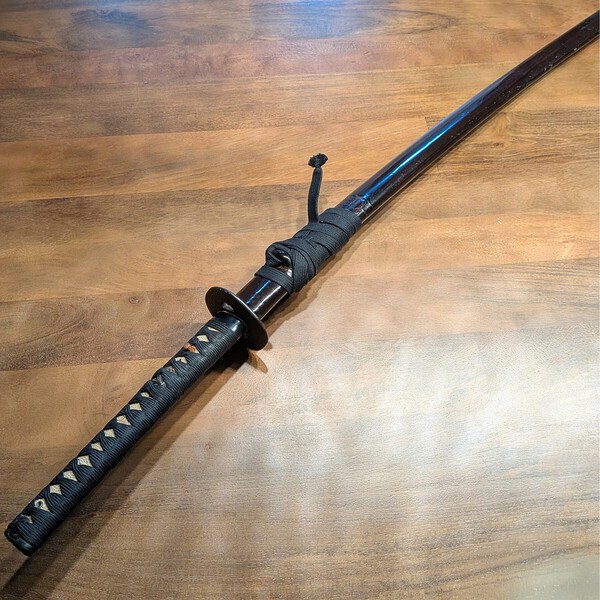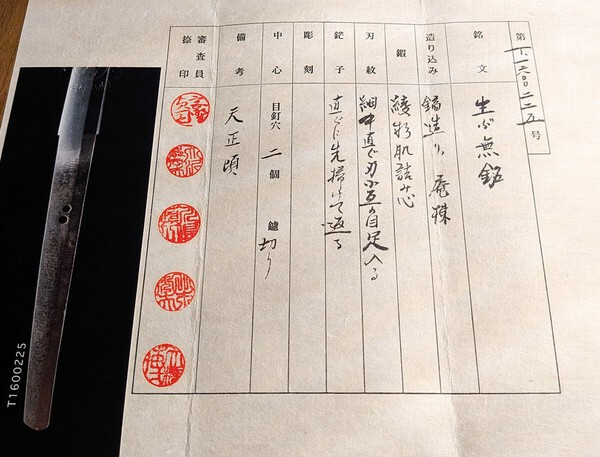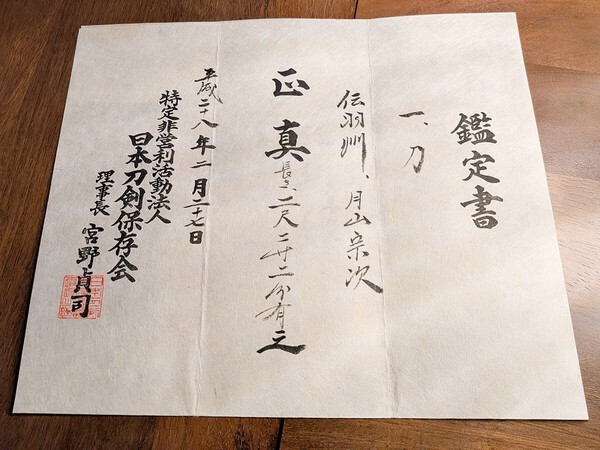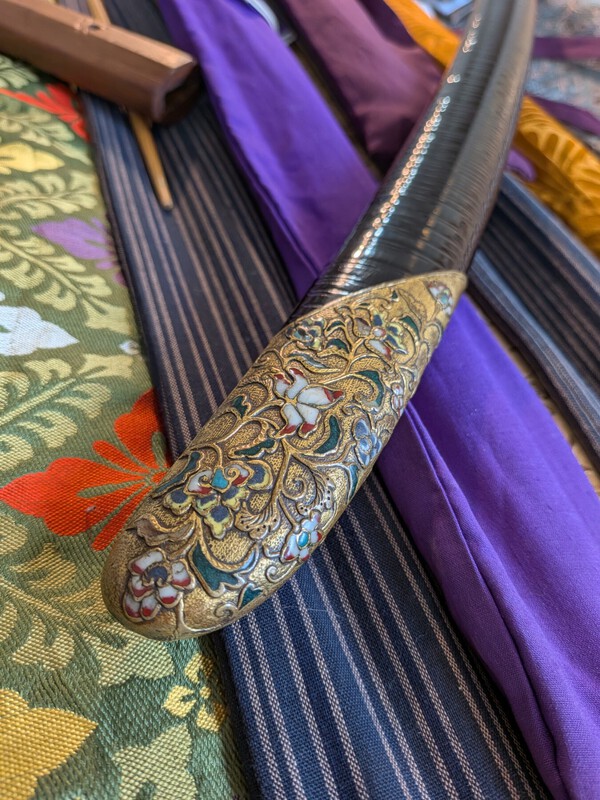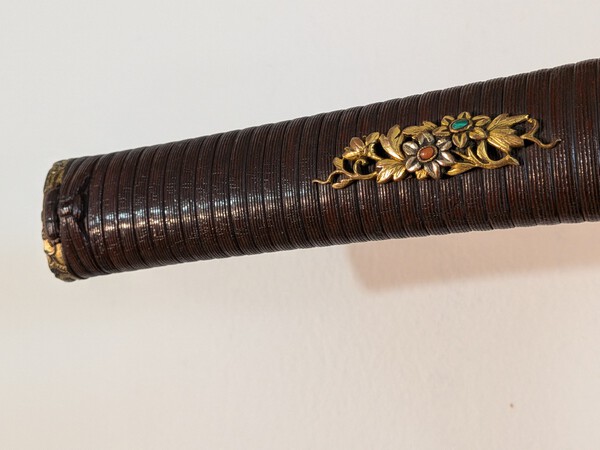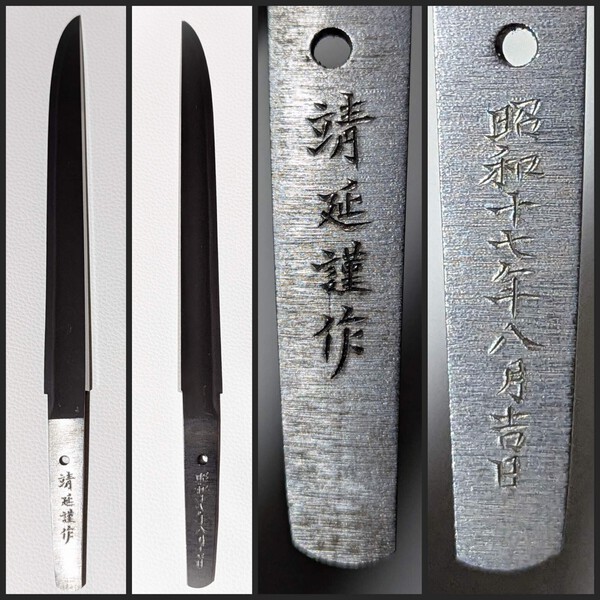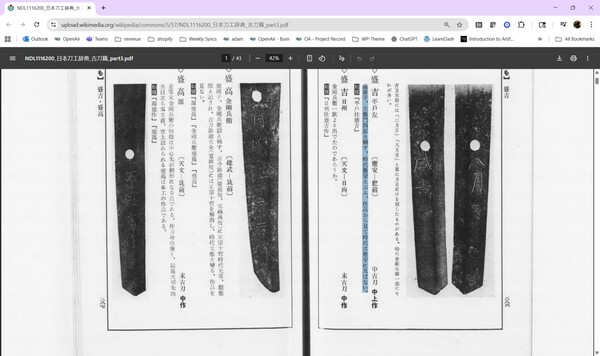-
Posts
5,174 -
Joined
-
Last visited
-
Days Won
139
Content Type
Profiles
Forums
Events
Store
Downloads
Gallery
Everything posted by Ray Singer
-
The later a sword is, the more that condition is strictly considered. There isn't an absolute rule about shinto and later blades being ubu. For example, suriage Nankai Shigekuni have passed juyo. However, suriage is a disadvantage for Muromachi period works.
-
My impression from the oshigata is that the lower mekugi-ana below the mei (now plugged) is the ubu-ana (the original mekugi-ana). If so, the upper mekugi-ana would have been added when the nakago was modified and shortened from the nakago-jiri end. This does appear to be suriage to my eyes.
-
Can you confirm which Kanenobu this is attributed to? There are a few, including: Naoe Shizu Kanenobu, Shigaseki Kanenobu and Seki/Mino Kanenobu. You may find it challenging to pass Juyo for a suriage machiokuri blade if it is Muromachi jidai.
-
Mei: Chikuzen (no) kami Nobuhide Date: Keio gannen hachi gatsu hi (a day in the 8th month of the year 1865) Nobuhide was an extremely famous swordsmith and student of Kiyomaro. Unfortunately the inscription on your sword does not appear to be authentic but you can research further and see authenticated examples online. https://nihontoclub.com/smiths/NOB174
-
武蔵大掾是一 = Musashi Daijō Korekazu https://nihontoclub.com/view/smiths/meisearch?type=All&mei_op=contains&mei=武蔵大掾是一
-
武蔵大掾是一 = Musashi Daijō Korekazu https://nihontoclub.com/view/smiths/meisearch?type=All&mei_op=contains&mei=武蔵大掾是一
-
The swordsmith name is Kaneyoshi. He is the individual who made the sword. There are no other names, just Kaneyoshi and the date I shared above.
-
ChatGPT and other AI tools are not the best solution for translating Japanese sword inscriptions. Please see below. 播磨大掾藤原清光 - Harima Daijō fujiwara Kiyomitsu https://nihontoclub.com/view/smiths/meisearch?type=All&mei_op=contains&mei=播磨大掾藤原清光
-

Muromachi Period Ko-Gassan Munetsugu katana in koshirae
Ray Singer replied to Ray Singer's topic in Sold Archive
The Ko-Gassan was sold. Best regards, Ray -
Signed Kaneyoshi and dated a day in May, 1944. It appears to be authentic.
-
Here is one that was shared here recently. Separately, I recently accepted ubu signed Kongobyoe wakizashi and tanto on consignment. Best regards, Ray
-
You see the elongated mei format from the Hizen smiths, both from the original Tadayoshi school and in the later Hizen (no) kuni gendai group.
-
Wakizashi Attributed to Sōshū Masahiro, Ōei Era (NBTHK Hozon) Price: $4,500 + shipping This mumei wakizashi has been attributed by the NBTHK to Sōshū Masahiro and is accompanied by a current NBTHK Hozon kanteisho. The blade is from the Ōei period, a time during which the activity of the second and third generations of Masahiro overlapped. While both generations produced work under the same name, the characteristics of this blade align more closely with the nidai. The presence of a vibrant hitatsura with bright nie, ara-nie, tobiyaki, and muneyaki, along with an active jihada, suggests the hand of the second generation more so than the sandai, whose work tends to exhibit a quieter and less nie-laden surface. The blade measures 1 shaku 5 sun 8 bu and is in an older but intact polish, with a few minor stains. The hitatsura is highly expressive, featuring rich nie activity across the ha and ji. Ara-nie forms strong kinsuji and sunagashi in areas, with tobiyaki scattered across the monouchi and muneyaki continuing along the back. The boshi is deeply tempered with nie-kuzure. The jihada is itame with some small ware, and the blade shows possible evidence of historical use, including several kirikomi along the monouchi. The sugata is elegant and in the style of a kodachi. The form of the habaki suggests it was once fitted in a koshirae in the efu-tachi style. Masahiro is considered a direct descendant of Hiromitsu, who in turn transmitted the most technically advanced aspects of the Sōshū tradition after Masamune. Hiromitsu is credited with the perfection of hitatsura. Masahiro’s early work clearly reflects the techniques and aesthetic principles developed under Hiromitsu’s hand. An example of shodai Soshu Masahiro is listed below. https://nihonart.com/portfolio/shodai-soshu-masahiro-ko-wakizashi/ The nidai Masahiro worked through the Meitoku and into the early Ōei period. He is distinguished from the sandai by his liberal use of nie and a more active chōji-midare and gunome-midare structure. In contrast, the sandai’s blades are quieter, occasionally verging toward suguha-based interpretations with reduced nie. This blade, with its dynamic hataraki and exuberant use of nie-deki, is more consistent with the nidai’s approach. The overall construction and shaping of the nakago also supports an earlier attribution within the lineage. MASAHIRO (正広), 1st gen., Jōji (貞治, 1362-1368), Sagami – “Sōshū-jū Masahiro” (相州住正広), “Masahiro” (正広), “Sōshū-jū Masahiro saku” (相州住正広作), first name Kurōjirō (九郎二郎), student of the 1st gen. Sōshū Hiromitsu (広光), he worked in the style of his master whereas his hamon is somewhat smaller dimensioned as that of Hiromitsu, he also adds some togari elements, there are tachi, ko-wakizashi and tantō extant, chūjō-saku MASAHIRO (正広), 2nd gen., Meitoku (明徳, 1390-1394), Sagami – “Sōshū-jū Masahiro” (相州住正広), “Masahiro” (正広), suguha-chō mixed with slightly undulating notare, gunome, ashi, yō, sunagashi and small tobiyaki in nie-deki, higher gunome elements towards the bōshi area can be connected to the kaeri and muneyaki MASAHIRO (正広), 3rd gen., Ōei (応永, 1394-1428), Sagami – “Sagami no Kuni-jūnin Masahiro” (相模国住人 正広), “Sōshū-jū Masahiro” (相州住正広),, “Sōshū-jūnin Masahiro” (相州住人正広), only few blades are extant by him, the jiba is no longer noticeably nie-laden with his generation
-
- 6
-

-

-
I am sorry for the bad news Joris, but this one is not authentic. Please see below. https://www.jssus.org/nkp/fake_japanese_swords.html
-

Muromachi Period Ko-Gassan Munetsugu katana in koshirae
Ray Singer replied to Ray Singer's topic in Sold Archive
I did not see that later Muromachi Ko-Gassan Munetsugu documented elsewhere but I will research further. -
Offering an ubu Muromachi period katana in koshirae with current NTHK kanteisho to the Dewa Ko-Gassan swordsmith Munetsugu. The jihada is a beautiful ayasugi-hada, typical of what you would see from the Ko-Gassan school. The blade has a suguha-based hamon activities which flow with the jihada. The blade is in late Edo period buke-zukuri koshirae, with shakudo fuchigashira and menuki, and an Edo period iron tsuba. The saya does need repairs (a replacement kojiri and to be reglued). While the NTHK kanteisho noted the blade as being Tensho (late Muromachi), the only Ko-Gassan Munetsugu I see documented is from the early Muromachi period, circa Oei. His bio is below, courtesy of Markus Sesko. SOLD + shipping MUNETSUGU (宗次), Ōei (応永, 1394-1428), Dewa – “Gassan Munetsugu” (月山宗次), Gassan school
-
Please see below for information on Katsumura Norikatsu. Yours is dated a day in the second month of Keio two (1866). https://nihontoclub.com/view/smiths/meisearch?order=field_smith_start_era_value&sort=asc&type=All&mei_op=contains&mei=勝村徳勝
-
Any chance of seeing a clearer image? Perhaps Kanehide.
-
We will need to see the mei to answer. This is a date: October, 1943.
-
This is a koshirae I just received a few days ago with a signed signed So-den Bizen blade from one of Enbun Kanemitsu's students. The koshirae has inlaid coral and malachite (in addition to the cloissone elements). The fittings have an Ezo / Umetada look to them (excluding the kojiri). Best regards, Ray
- 26 replies
-
- 12
-

-

-

-
Perhaps the name itself at the bottom is a form of Sairen (西蓮)?
-
Yasuoki, a lucky day in February 1942 Yasuoki was one of the famous Yasukuni Shrine smiths who worked during the war era. https://www.google.com/search?q=Yasukuni+yasuoki+site%3Awww.militaria.co.za&client=ms-android-google&sca_esv=6b419d715691fe69&sxsrf=AE3TifNOdIuXVStnsrNxL8ac8AzXgKUeSQ%3A1757947355680&ei=2yXIaNueKfLJwt0Ph6eD4AU&oq=Yasukuni+yasuoki+site%3Awww.militaria.co.za&gs_lp=EhNtb2JpbGUtZ3dzLXdpei1zZXJwIilZYXN1a3VuaSB5YXN1b2tpIHNpdGU6d3d3Lm1pbGl0YXJpYS5jby56YUjcLVCFB1jWLXADeAGQAQCYAfsBoAHBD6oBBTAuNi40uAEDyAEA-AEBmAIKoALJDMICChAAGLADGNYEGEfCAgcQIRigARgKwgIFECEYqwLCAggQABiABBiiBJgDAIgGAZAGCJIHBTIuNS4zoAfqLLIHBTAuNS4zuAe3DMIHBzAuMi42LjLIBzM&sclient=mobile-gws-wiz-serp#ip=1
-
Yasunobu kinsaku tanto dated a lucky day in August, 1943. A lovely Yamashiro-den utushi-mono with ko-itame jihada and suguha-based hamon in ko-nie. Bio below courtesy of Markus Sesko. Price: $4,500 + shipping YASUNOBU (靖延), Shōwa (昭和, 1926-1989), Yamagata – “Murakami Yasunobu kinsaku” (村上靖延謹作), “Yasunobu” (靖延), real name Murakami Ensaku (村上円策), student of Ikeda Yasumitsu (池田靖光), he made about1,000 blades for the Yasukuni forge. Murakami YASUNOBU 村上靖延, given name Ensaku 円策 was born in April 24th, Meiji 40th (1907) in Yamagata prefecture. He joined The Nihonto Tanren Kai foundation (NTK) 日本刀鍛練会 in December 15th, Showa 8 (1933) with his chief master smith Ikeda YASUMITSU 池田靖光. After 5 years' practicee, he was given the official smith name YASUNOBU 靖延 by the War Minister, Itagaki Seishiro 板垣征四郎 in January 11th, Showa14 (1939) and played the chief role till the dissolution of NTK Showa 20th (1945) in the end of the War. Chairman awarded in the 2nd official military sword exhibition in December 21th, Showa19 (1944). Article below from to-ken.uk: "It was customary that swords were sometimes given as gifts by the emperor to graduates who attained distinguished grades at the Imperial Army Staff College and the Imperial Naval College. Known as “Onkashi-to”, katana were given to the Army whilst the Navy had tanto or daggers. These were swords of superior quality and the weight and dimensions, including the curvature, were very specific. After the inspection agreed that they were worthy of being Onkashi-to the smith was allowed to sign the sword and added the characters KINSAKU after his name, meaning “Respectfully made this”. Unlike normal work, the name inscription seems to have been made below the mekugi-ana or tang hole, on these swords. Of course as an Army organisation, it was unusual that even tanto blades would be made for the Navy, but this was because the official smith of the Imperial Naval College, Horii Toshihide, had become very ill and was unable to forge blades. Of course, it was a great honour for a swordsmith to have his work recognised as Onkashi-to. " https://to-ken.uk/onewebmedia/YASUKUNI.pdf
- 1 reply
-
- 5
-

-

-
Please show a photo of the full nakago. This is the typical nakago shape seen in Muromachi period Kongobyoe (on the right in the image below).



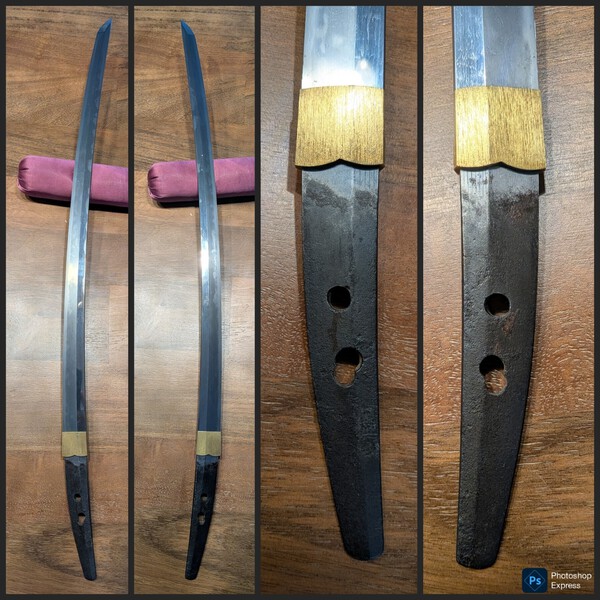

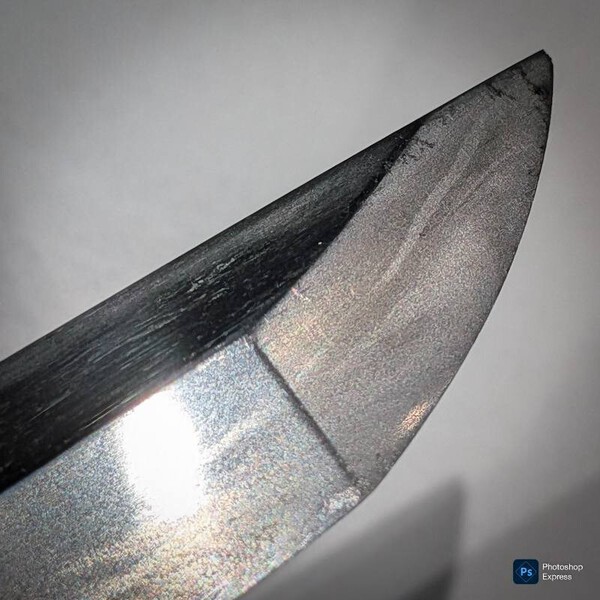



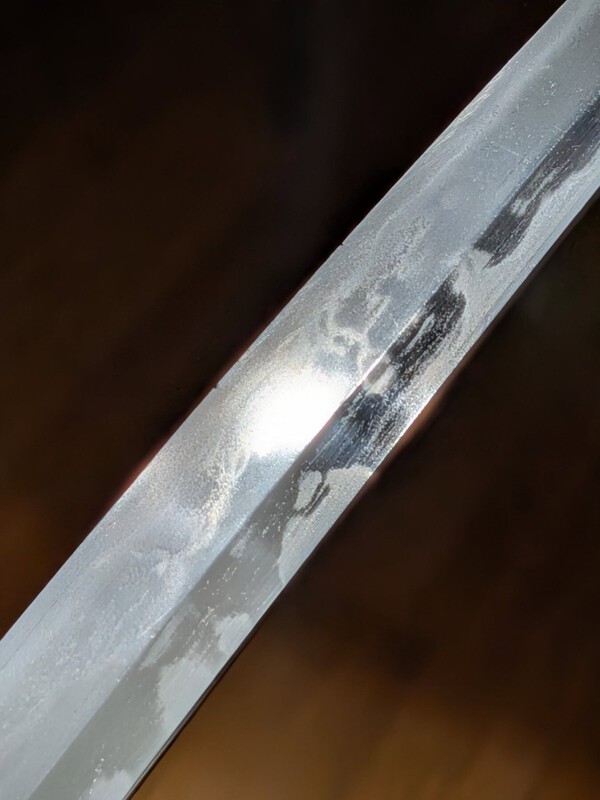


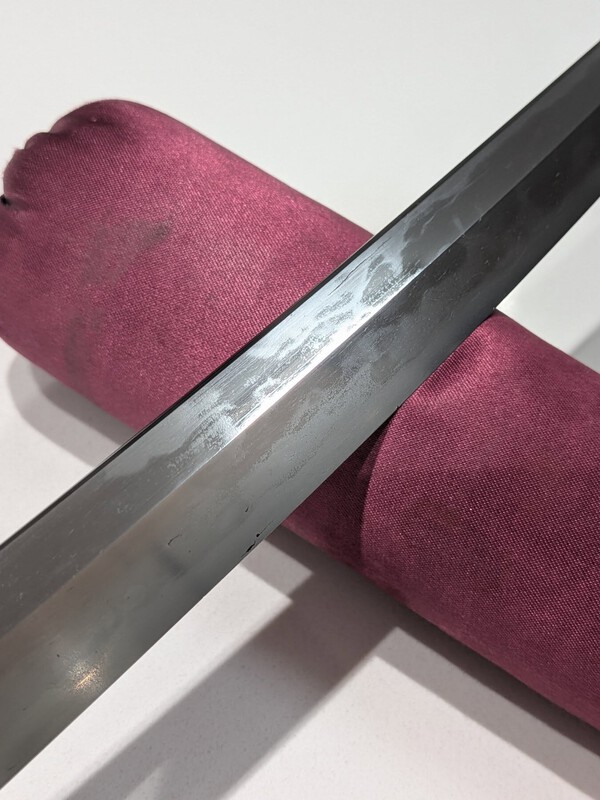
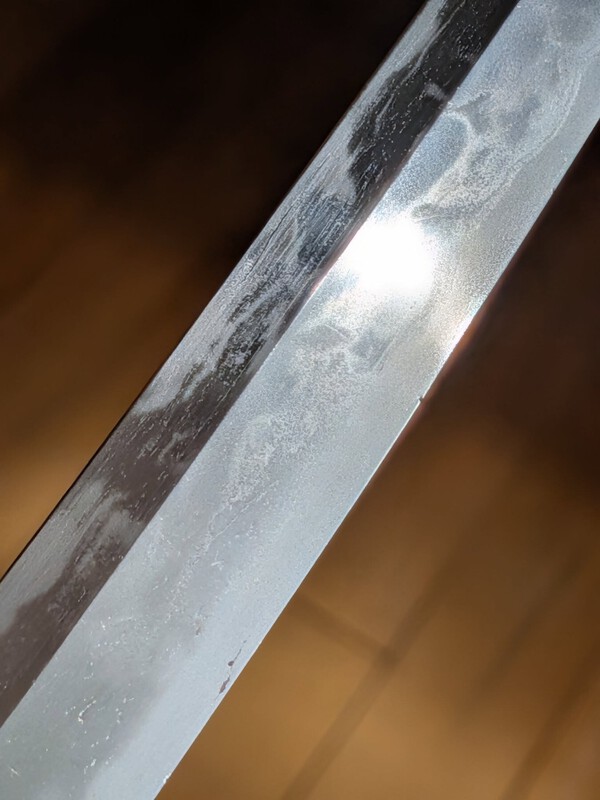




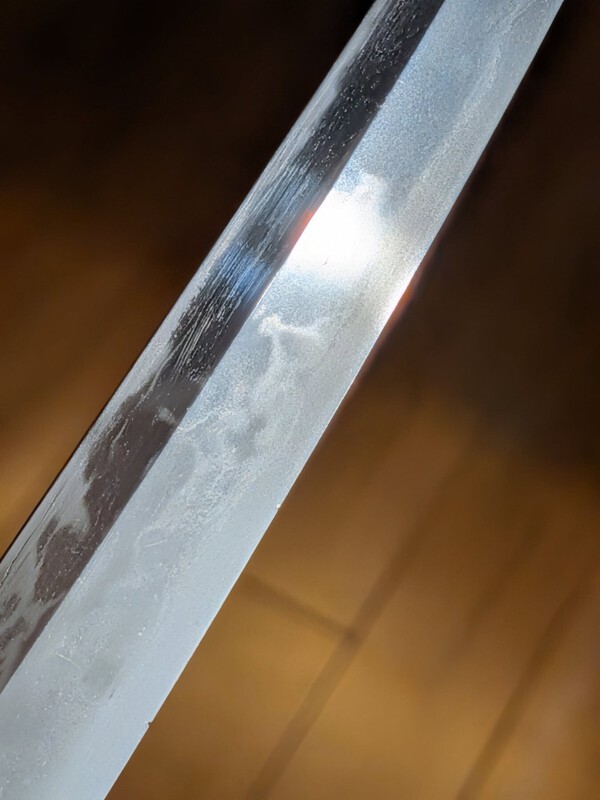














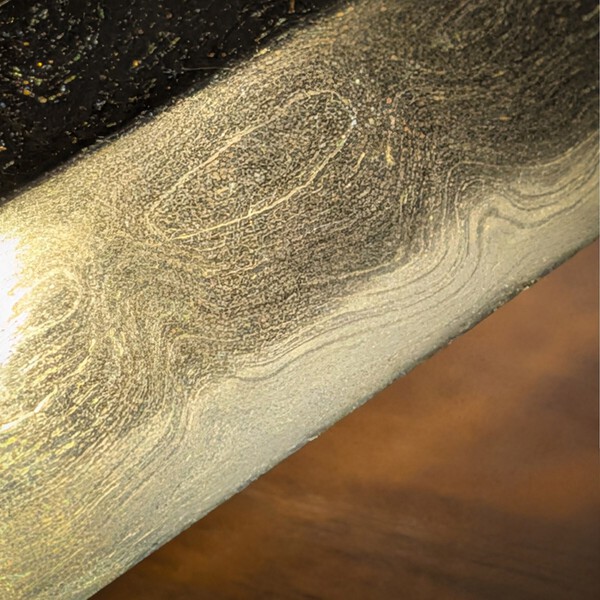
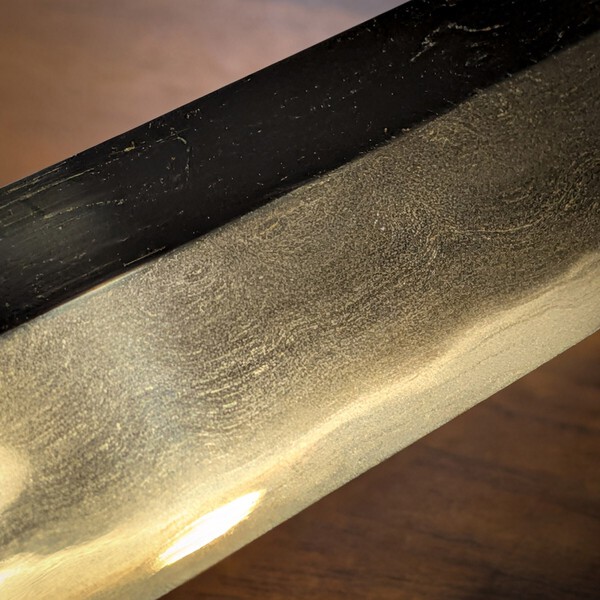
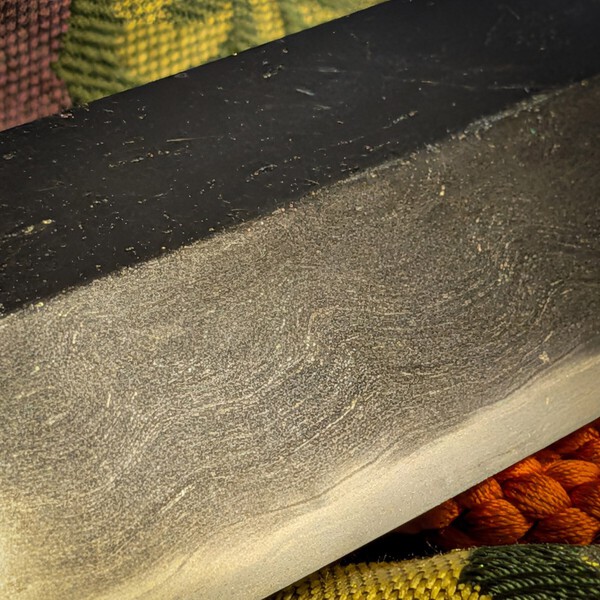
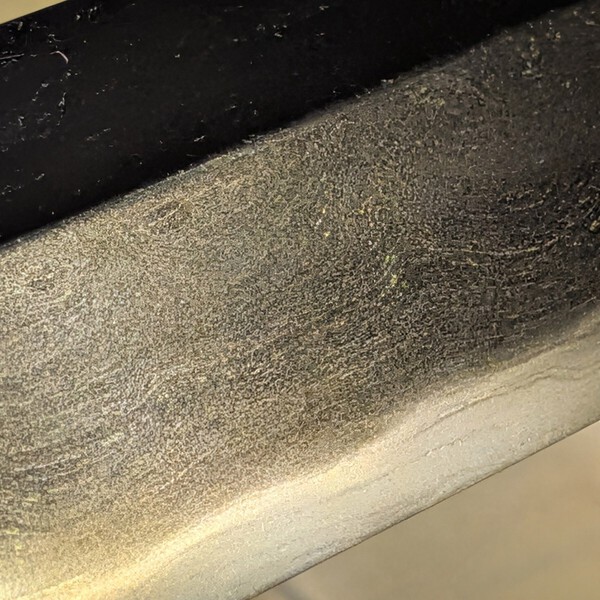
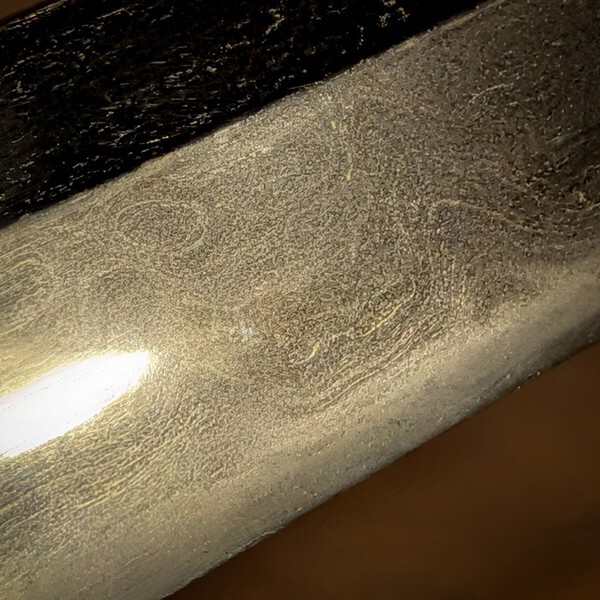
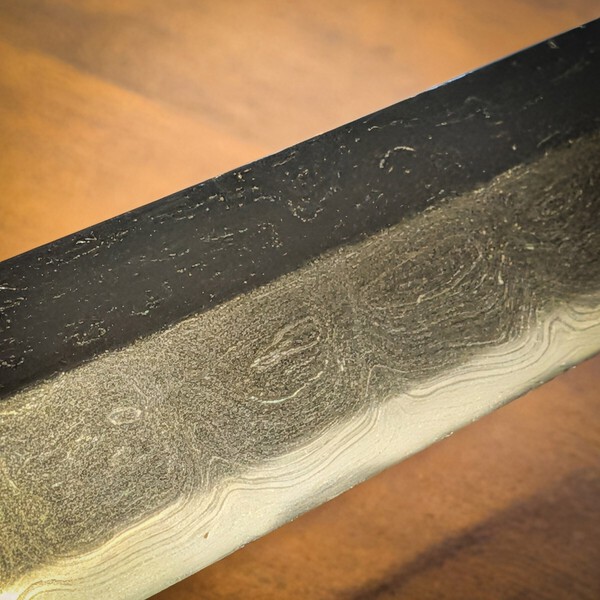
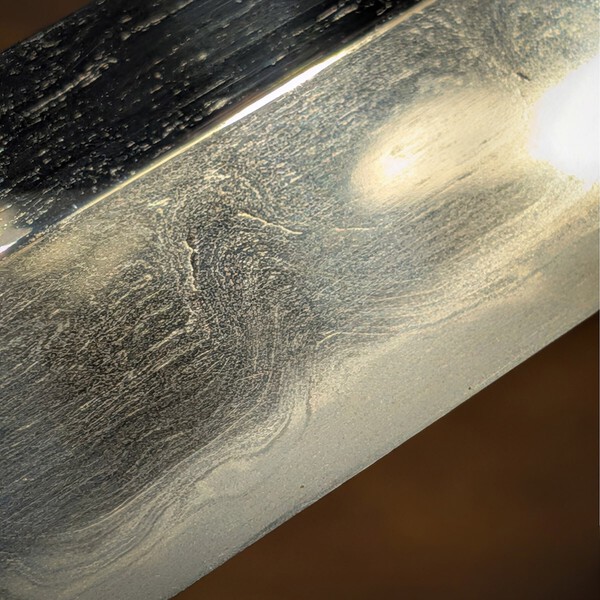

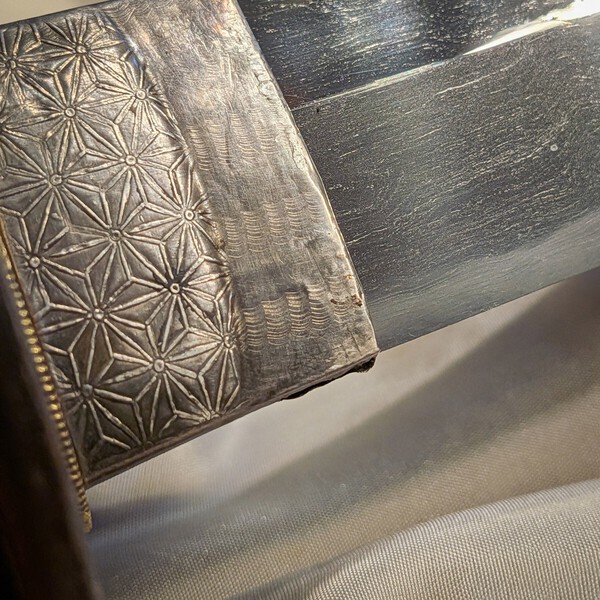
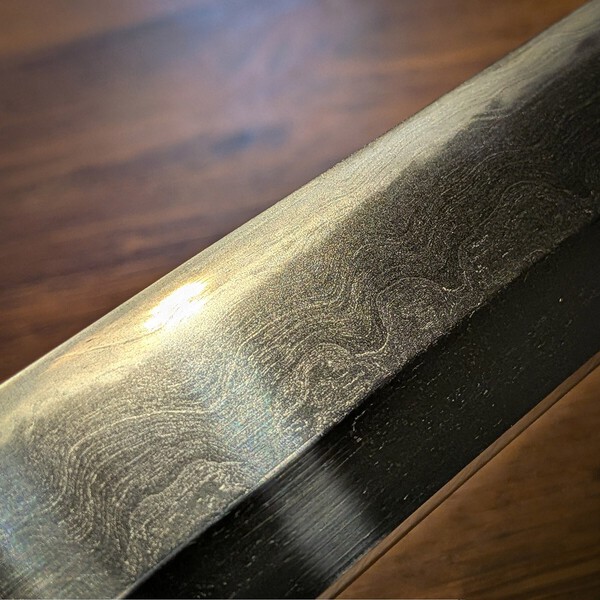
.thumb.jpg.e858a1e8ab6bcb8e83f46707a3dd4de6.jpg)
